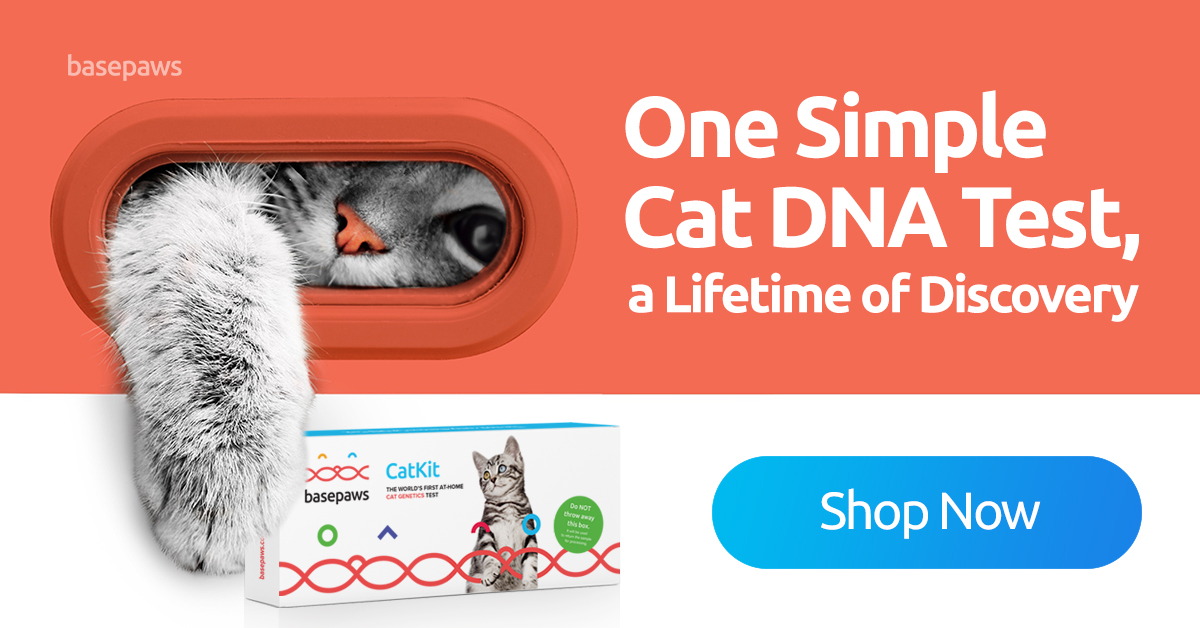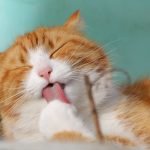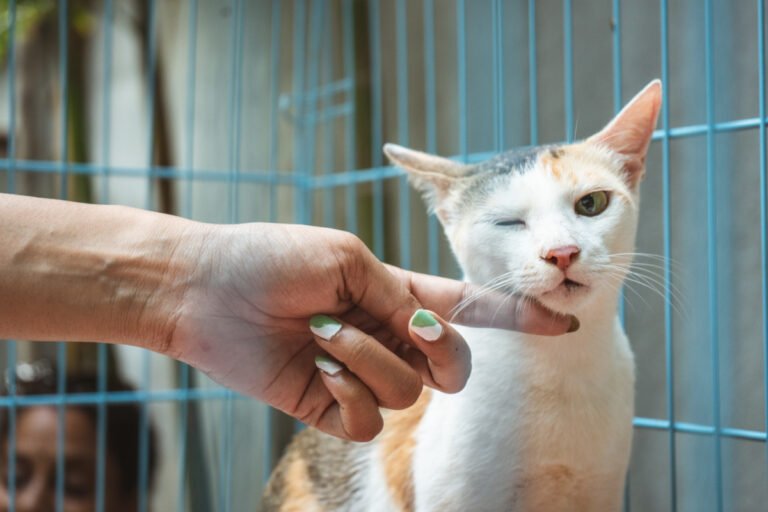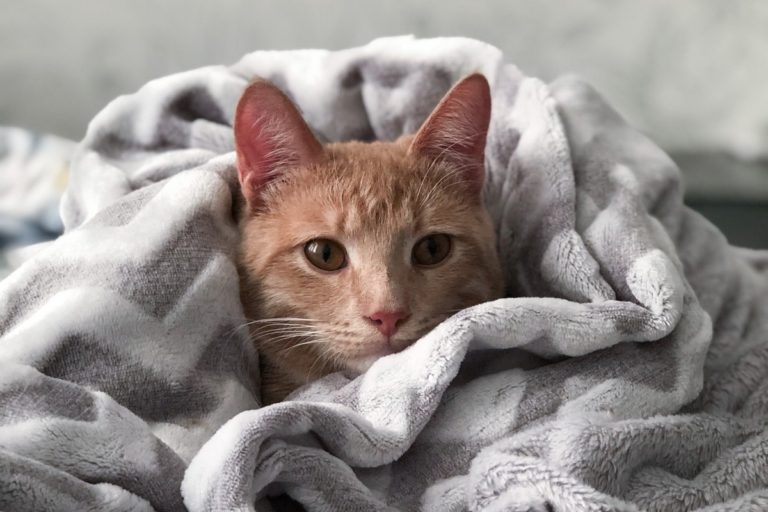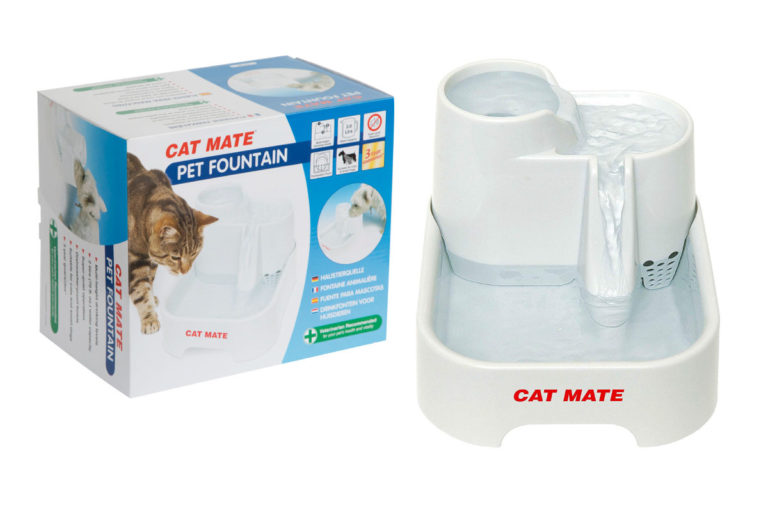All cats regurgitate their food from time to time. But when it becomes a regular thing you might start to wonder if your cat has an eating disorder. Why do cats eat until they throw up? Let’s dive into the gooey matter.
DISCLAIMER: This post may contain affiliate links. If you click one of these links and decide to make a purchase, we may receive a small commission. This comes at no extra cost to you and helps to keep the site alive and up to date. If you want more information, please review our Privacy Policy. Thank you for your support!
Vomiting Versus Regurgitation In Cats
When you find some a wet mess of chewed up cat food on your floor, there are two things that could have happened. Either your cat vomited, or she regurgitated her meal. To help your cat, it is important to know the difference between vomiting and regurgitation.
Vomiting
Vomiting is an active process where your cat’s abdomen contracts and pushes the stomach contents upwards. It usually takes a couple of agonizing seconds to complete and leaves your cat licking her lips and swallowing excessively because of nausea. The puddle she has left on the floor contains food, phlegm and orangey stomach fluids.
Regurgitation
Regurgitation, on the other hand, is a passive process and can literally happen in the blink of an eye. Your cat just silently spits up whatever is in her esophagus or stomach and seems completely unaffected by it. The food is sort of half digested and comes out shaped like a tube with a lot of mucus.
Related Post: Is Pet Insurance Worth It For Indoor Cats?
Is pet insurance worth it for indoor cats? Read this guide to learn about pet insurance for cats and calculate if it is really worth it for your indoor cat.What Causes Vomiting After Eating In Cats
If your cat is regurgitating or vomiting right after eating a meal, there are a couple of things that could be going on. Even if it happens only and right after eating, it could be related to other behavior, her environment, or an underlying medical issue. Let’s look at the most common causes of cats throwing up after eating.
Eating Too Fast
If your cat is regurgitating, not vomiting, the most likely cause is that she ate her meal too fast. When a cat’s stomach expands too quickly, the brain receives a signal to discard the excess by ways of regurgitation.
In a household with multiple cats, individual felines may feel the need to eat their food quickly, before any of their siblings can get to it. This is a sign that your cat is feeling insecure and doesn’t fully own her place in the home. She more than likely gets bullied a bit by your other cats as well.
Now, if you only have one cat and she still goes to town on her food bowl, she might just be very hungry. Make sure you are feeding her enough for her age and weight. If you are sure you are, take her to the vet for a check-up. She might be suffering from a disease like hyperthyroidism, kidney failure or diabetes.
Eating Too Much
Eating too much goes hand in hand with eating too fast. The same expansion of the stomach wall causes your cat to regurgitate. The main difference between the two is that a cat that eats too much might eat at a regular, or even slow, pace, but simply doesn’t stop.
Not all cats have that trigger that tells them enough is enough. These cats are at risk of becoming overweight and, eventually, obese. If you notice that your cat regurgitates on a regular basis and is also getting a little husky, check her portion sizes. You might very well be giving her too much.
If your cat is already overweight it is definitely worth making a trip to the vet. Obese cats are at a higher risk for heart disease, diabetes, cancer, arthritis and more debilitating diseases.
Related Post: Is Peanut Butter Good For Cats?
Peanut butter is great to give medicine to dogs and hide its taste. But is peanut butter good for cats? Or should they stay away from it? Read on to find out.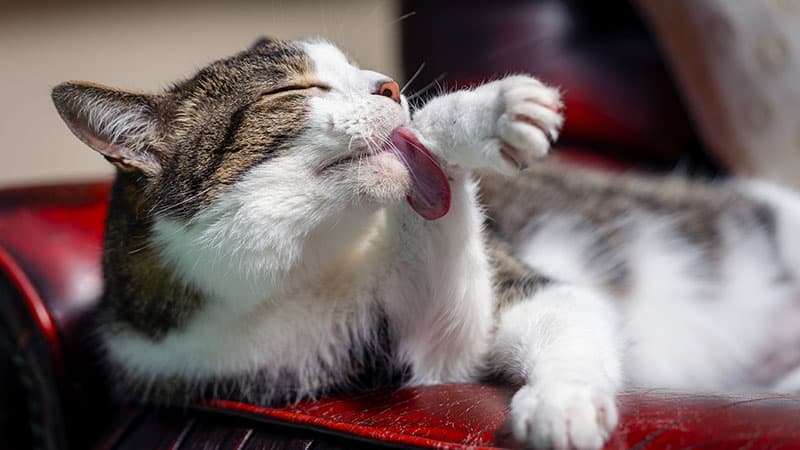
Hairballs
The most common cause for cats vomiting is hairballs. When your cat cleans herself by licking her fur, tiny hooks on her tongue pull out any loose hairs. She swallows these hairs, which then either get passed through her digestive tract, or form into a ball in the stomach.
Once in a while these hairballs get too big to pass or digest, so your cat coughs them up in a big slimy mess. Eating a full meal merely acts as a trigger for this process.
As gross as it sounds, you best check that pile of vomit for hairballs before you clean it up. If your cat produces a lot of them, it could mean she’s stressed about something. On top of that, hairballs can lead to constipation.
Intestinal Blockages
Although less common, another important reason for cats vomiting after their meal that we need to look at is intestinal blockage. This occurs when the bowel is blocked, by feces, hairballs or a foreign object, to a point where nothing can get past anymore.
Intestinal blockages can happen when your cat doesn’t drink enough water. She won’t have enough fluids to keep her feces malleable and moving smoothly through her gut. Instead they dry out before she can drop them in the litter box and just get stuck.
Similarly, hairballs can back up and create a big, hairy barrier in the bowel. If this happens a lot, over time your cat could develop something called megacolon, where the lining of the intestines dilates so much that it can’t contract and pass feces anymore.
Cats that suffer from pica, an eating disorder that has them eating inedible substances, can be at a higher risk for getting their intestines blocked, depending on their poison. Rubber bands and strings can obviously tie around things and cause some real damage. Plastic and other inorganic materials can pile up and prevent things from going through. Check the contents of your cat’s vomit to see if she’s eaten anything she shouldn’t have.
Allergies And Food Intolerances
Throwing up can also be a sign of allergies or an intolerance to a certain ingredient. Allergies can occur in reaction to food, medication, or environmental factors like plants or the type of cat litter you use.
Allergies and food intolerances in cats don’t always manifest on first exposure to the substance or ingredient. Sometimes the allergens build up over time before they hit that critical point.
Other symptoms of an allergic reaction include shedding, dandruff, itching, diarrhea, sensitive stomach, excessive drinking and coughing.
If you suspect that your cat has an allergy, try to find the culprit by ways of elimination. You basically take away all possible allergens and reintroduce them one by one until you see the symptoms flare up again. Enlist your vet for some backup.
Digestive Issues
Regular vomiting in cats can be a sign of underlying digestive problems. Gastroenteritis and irritable bowel disease (IBD) cause inflammations of the gastrointestinal tract that lead to vomiting.
IBD often occurs in conjunction with other diseases, like pancreatitis or hyperthyroidism, especially in older cats. If your cat has diarrhea regularly, on top of the vomiting, be sure to consult with your vet about this. With a proper diet and regular check-ups you can greatly improve your cat’s quality of life.

Should I Be Concerned About My Cat Vomiting?
Some vomiting or regurgitation is nothing to worry about. Just like you and me, our cats have their off days. They can catch viruses and make dubious diet choices that don’t always turn out in their favor.
However, if your cat vomits or otherwise spits out her food at least twice a day for two days or more, you should take her to the vet as soon as you can.
If your cat can’t keep anything down, she is in serious danger of dying. Cats can’t go without food for more than two, maybe three, days before their liver starts turning on them. Your vet can administer a shot against nausea, give intravenous fluids or use a feeding tube to provide the needed nutrition to your cat. Further testing will likely be necessary to determine the underlying cause.
How To Stop Your Cat From Vomiting After Eating
Specialized Diet
There are a lot of specialized types and brands of cat food on the market that can help to control your cat’s vomiting. For cats that suffer from hairballs, for instance, there are many diets formulated for indoor, less active cats that you can try.
Royal Canin and Hill’s Pet are two cat food brands that are well known for their vet-recommended prescription diets. Both have solutions for the most common feline illnesses, including pancreatitis, hyperthyroidism, and more. I advise you to try them, especially if your cat is really suffering.
However, these specialized diets usually aren’t the tastiest. Many cat guardians report their cats turning up their nose at these expensive diet foods, and my late kitty Link did as well. Plus, targeted diets tend to be really good for one thing, but bad for another. I recommend only feeding your cat something like this when necessary, and switching back to your normal, balanced cat food when the symptoms fade or your cat gets better.
Smaller Meals
Both for cats that eat too fast and cats that eat too much I recommend feeding them smaller portions. If your cat is overweight, feed her the amount of calories needed for a cat of her target weight, and she will automatically slim down. And no snacking!
A cat that eats fast can be helped by spreading her normal meal out over a few meals a day. This way, her stomach has enough room to take in the food and digest it before the next meal comes.

Slow Feeder
If your cat is regurgitating because she eats too fast, switch out her bowl for a slow feeder. A slow feeder, or slow feeding bowl, is essentially a bowl with obstacles. Your kitty will have to use her tongue, and sometimes her paws, to get to the food. That will definitely slow her down.
A variation on a slow feeding bowl is the puzzle feeder. This is a round, in most cases ball-shaped toy with holes. You fill it up with kibble or treats and leave it on the floor for your cat to play with. As she swats it across the floor, the pieces of food will fall out so she can eat them. It’s all about making her work for her food.
Anti Hairball Treatment
If hairballs are the cause of your cat’s gastric upset, give her some anti hairball treatment. Anti hairball treatment comes in the form of a sticky, malt paste that helps dissolve and pass the hairballs. Give it to your cat at least once a week, or more if her symptoms get worse or she is constipated.
I personally use Beaphar Malt Paste for my cats, which I highly recommend. The easiest way to administer it is to simply smear it onto your cat’s upper lip and let them lick it off. Keep an eye on them until they’ve swallowed it all to make sure they don’t choke, or wipe it on your carpet.
Some cat owners worry about the amount of sugar that is in most anti hairball pastes, more so if their cat already has diabetes. However, over the counter hairball remedies are perfectly safe for any cat, as long as you feed them a balanced diet tuned to their needs.
Related Post: Complete Guide To Feline Nutrition: What Should I Feed My Cat?
Ever wondered: "What should I feed my cat?" Read our complete guide on feline nutrition to learn about the best diet for your cat.Stop Free Feeding
Many cat owners leave out a bowl of dry food for their cat to eat from during the day and night. We call this free feeding. Cats that can control their portions on their own are generally fine with this, but it can be a big part of the problem for chunkier cats.
Moreover, some cats require the structure of two meals every day at the same time to have a sense of security. Just knowing that she’ll be fed and will have an opportunity to bond with you can be a real pick me up for your cat. Something to get her through the day without anxiety over food.
Cats that overeat or eat too fast tend to respond really well to a strict feeding schedule. You’ll probably get some complaining meows and sad looks the first few days, but stick with it for the sake of your cat’s health.
Final Thoughts
Regurgitation and vomiting once in a while after eating is a normal part of every cat’s life. However, when it becomes a routine behavior or is paired with other symptoms, like diarrhea, there could be something wrong. Use our guide to determine exactly what’s bothering your furry feline and consult your vet for further advice.





